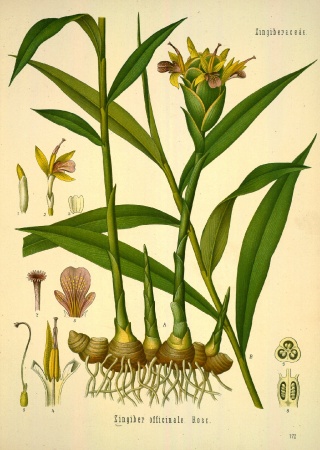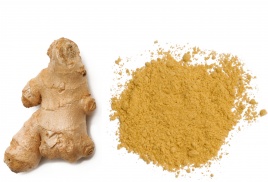Ginger
- …ginger is an ingredient in many antitoxins?
- …ginger is used to flavor candy, chewing gum, lemonade and even beer?
- …ginger is an important ingredient in many oriental spice mixes, including curry and tandoori?
- …ginger relieves symptoms of motion sickness?
- …ginger is sold as black (unpeeled), white (peeled), in Japan pink (preserved), mainly with sushi?
- …ginger is an antioxidant, which helps slow the aging process?
- …ginger as a spice is the fresh or dried, ground or preserved root of the Zingiber officinale plant?
Ginger apples
4 peeled and cored apples, thickly sliced
2 dl white wine
1 teaspoon ginger
pinch ground nutmeg
1 teaspoon ground cinnamon
1 tablespoon granulated sugar, (candied ginger)
Pour wine with spices over apple slices and allow to soak for several hours. Boil, remove apple slices from wine sprinkle with sugar and grill until golden brown. Serve warm, basted with remaining spiced wine, optionally garnished with sliced candied ginger.
As early as 500 BC, the founder of Chinese philosophy, Confucius, supposedly spiced his every meal with ginger. He expected this daily use of ginger to assure him of a long life. In tropical Asia, ginger has been cultivated for over 3,000 years. The first European to see a ginger plant, Zingiber officinale, with his own eyes was Marco Polo, In China. He described the plant on his return to his native city of Venice. In the Middle East and Europe, ginger was known even before the rise of the Roman Empire. As early as the beginning of the 15th century, ginger was the first Asian spice to be taken to the Americas. It appeared in Africa with the Portuguese and the Spanish introduced it to western India in the 16th century. The British began to use ginger extensively during the period when they had control of Asian lands during the 19th century.


